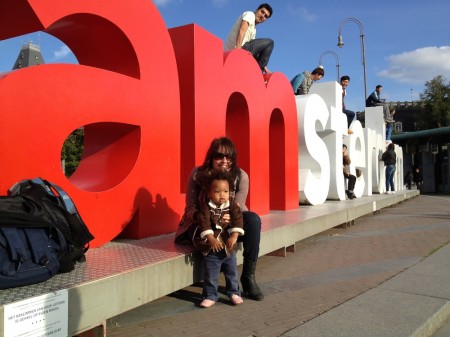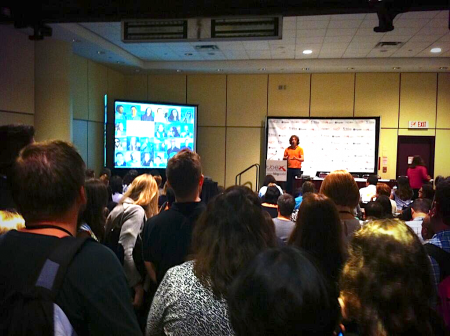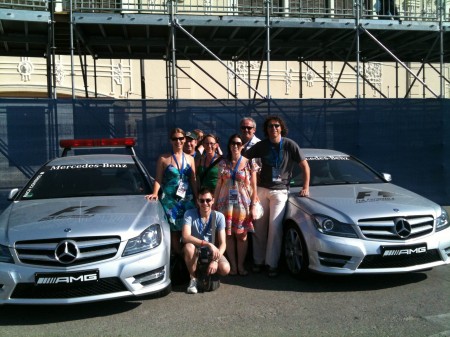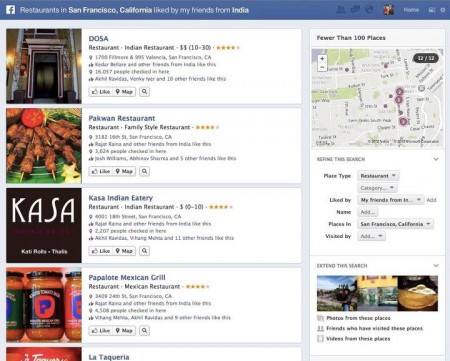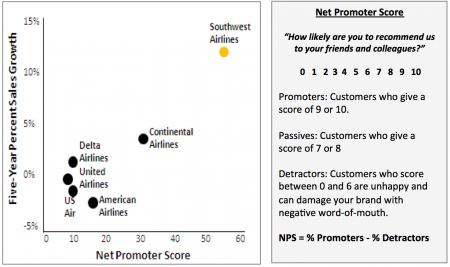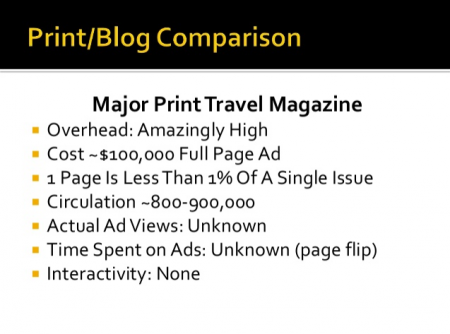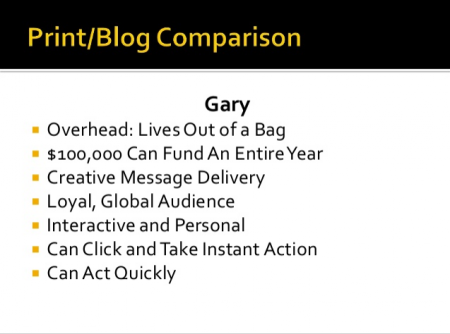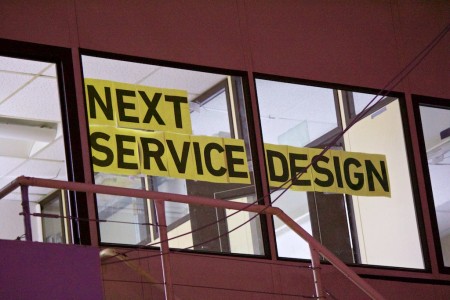» Next Entries
Category
Travel & Tourism
-
Internet, leadership, Management, Marketing, Travel & Tourism
Building the social destination brand
09.16.13 | Permalink | 3 CommentsThe Iamsterdam sign is an invitation to take a picture and share it
Building a destination brand is done primarily through the stories people tell each other. And social media has only accelerated that process. Getting more of the right stories told is a massive opportunity but how do you go about it?
Here’s a 5 step strategy for this.
1) MOTIVATE
A destination is the stage where memories are made and stories are created. People ignore or forget the ordinary and remember and share what’s remarkable. These remarkable experiences often turn into the primary motivators for others to visit a place. In order to get more stories told in social media, you need to make sure things are worth talking about. The IAmsterdam sign in Amsterdam (above) is always surrounded by tourists taking photos. Not only is it a cool piece of art, it’s also the perfect way to tell your (Facebook/Instagram/etc) friends where you are.
For a tourism business it’s important to build in moments that motivate people to share in the overall experience. For a DMO it’s important to increase the number of things worth talking about overall. Educating your operators about this principle is the low hanging fruit. Every tourism business should have at least one reason for people to talk about them. Often it’s just a matter of making a few tweaks to get people talking. Getting involved in city planning might be more difficult but can pay-off with massive dividend.
2) ENABLE
When there’s something worth sharing, people need to be able to share it right away. For international visitors, data roaming is often an obstacle and the availability of free Wifi will increase social sharing. It’s not just the responsibility of operators. Viewpoints, beaches, mountaintops, buildings of great architecture typically don’t have a tourism operator associated and Wifi is nowhere to be found. This is where the DMO can step in. Taiwan gets it, they offer free nationwide Wifi to tourists.
But there are other obstacles. Some businesses don’t allow pictures to be taken while others don’t have the proper lighting to make photos or to make them look good. It’s a missed opportunity, you have to give people the opportunity to share, even if it’s in a limited capacity.
3) ENCOURAGE
People will share an experience when they find it remarkable. For people on the fence it’s easy to pull them over the line by encouraging them. This can be achieved by things from signage to incentives. Disney identifies places in their theme parks with photo opp signs. Some DMO’s are starting to do the same. We worked with a ski resort last year to do put signage up to encourage sharing combined with and a contest for the best photos shared.
At an operator level it’s often a matter of reminding and asking people. Remind people on checkout to give a review on Tripadvisor for example, or follow up with an email. Others take it a step further. When I was in Wollongong, Australia, the Skydiving operator filmed and photographed the experience and gave me a link where I could download the images with an easy way to share them through my social channels.
4) CURATE
When people share stories, it’s important to find them. Social Media is like a world-wide, real-time, always-on focus group. You’re crazy if you don’t take advantage of it. You need to find them the relevant stories about your destination, good or bad.
A lot of other opportunities and insights can be gained from the massive amount of stories out there. Brands like KLM, Gatorade, Nascar and many others have dedicated social media team that monitor social media for a variety of purposes. These programs separates signal from noise by curating the content and processing it for specific purposes. Some data might need to actioned on while other data serves specific research purposes.
5a) ACTION – AMPLIFY
Some of the best stories told in social media are worth incorporating in your own marketing. People share stories with great emotional appeal and the quality, creativity and authenticity often rivals what a DMO and their agencies produce. Use the best content you find to enhance your own activities of amplify them through your own channels.
Visit Britain started sourcing the majority of the photos on its website from Flickr back in 2009. Tourism Australia only posts photos on Facebook submitted to them by their community. Many DMOs find the best photos on Instagram and reshare them while Pinterest is probably the best example of content curation with the best photos people find online.
But why stop there? You might want to give some quality content even more exposure. You can use some SEM budget to amplify a great blog post from an influencer for example. Some amplification can go even further. The Canadian Tourism Commission turned some of the best YouTube videos they found about Canada into TV commercials and recently crowd-sourced another. It doesn’t matter who created the story or where it’s located. What matters is that it moves a person down the funnel.
5b) ACTION – CUSTOMER SERVICE
Social Media will identify customer service challenges and opportunities. DMOs are already in the customer service business but have often limited themselves to a box called a visitor centre. Step outside the box and start assisting visitors in real time by responding to people in social media. Customer service challenges can be resolved quickly before they turn into negative stories.
In the meantime, the overall visitor experience will benefit from assisting travellers through social media. KLM will respond to any social media question within an hour. Most tourism operators don’t have the luxury to set-up these kind of services but the DMO can fulfill that role on behalf of their industry.
5c) ACTION – MITIGATE
Listening can also help to find information about a destination on the internet that’s incorrect (yes, there is incorrect information on the interwebs). This information could be viewed by many potential visitors who could make the wrong decision as a result. Often it’s just a matter of contacting the owner of the source to correct the error. Start by asking nicely!
If something slips through the cracks and negative stories start to emerge it’s important to mitigate these as soon as possible. There are also specific events that could cause a social media crisis. Think about a natural disaster, a call for a boycott or an influencer will a horrible experience. Being prepared and having a social media response plan in place will streamline communication before things escalate far and wide and cause considerable damage. Don’t rely on old corporate communication strategies, they don’t apply to social media. Just ask United.
5d) ACTION – LEARN
People will take pictures of things they find remarkable. And when they put themselves in the photo it’s even more remarkable. The things people find remarkable might surprise you. Insights gained from a curation program can provide you with all kinds of new marketing ideas or even identify potential target audiences. You will also identify the challenges visitors might have with the destination experience overall, sometimes in places you might not expect. Addressing these challenges in a fundamental way through service design will allow you to create a more favourable perception of the destination overall. You can measure these things over time, segment them by audience, experience and other parameters. It’s a massive opportunity and part of the future of destination marketing.
-
Marketing, social media, Travel & Tourism
Why Social Media outside your own channels is more important
Storytelling
Destination Marketing is storytelling. And by now every DMO is generating content and distributing it through their own channels. Content is shared, people engaged, fans, followers and engagement is measured and reported. Social Media is firmly established as an important channel.
But if you want to start thinking like a level 4 DMO, one of the first things to do is look beyond storytelling through your own channels. The stories people share with each other in their own networks (often private and invisible to marketers) is more credible and trusted than any story a DMO creates.
Evidence
At #SoMeT13AU, Carl McCarthy from Facebook shared that over 70% of travellers update their status and/or share photos while on holiday. Let’s look at the Capilano Suspension Bridge, a populair tourism attraction in Vancouver. The public stats for their Facebook page show a respectable 12,401 fans with 1,275 people talking. But look at an often overlooked little statistic; 449,930 photos have been tagged with this tourism experience.
Let’s look at ten of the more populair attractions in Vancouver (selected by myself from memory).
attraction likes photos tagged Capilano Suspension Bridge Park 12,404 449,930 Vancouver Aquarium 30,777 694,427 Grouse Mountain Resort 22,597 148,824 Vancouver Art Gallery 20,631 64,857 Cypress Mountain 18,270 161,182 Granville Island 15,445 265,967 Science World 14,480 87,268 Museum of Anthropology 6,766 26,146 The Vancouver Lookout 3,003 17,747 Dr. Sun Yat-Sen Chinese Garden 2,446 29,980 Total 146,819 1,946,328 Collectively, these pages have 146,819 fans. More than 3x the fans of Tourism Vancouver’s page. The total number of photos shared is almost 2 Million! If we consider that the average Facebook user has 150+ friends it means that those 2 million photos probably reached tens of millions of people. And those are just photos of attractions where people geotagged the photo. The true number of tourism related photos shared online for Vancouver is exponentially larger. That’s the real Facebook marketing.
There’s also plenty of research that demonstrates the effect of somebody posting a Facebook picture has on their network for example. Anywhere from 20% to 52% of consumers have taken a trip to a destination as a direct result of seeing a photo posted by a friend.
And that’s just Facebook.
Implications for DMOs
The implication is that a DMO marketer needs to look beyond their own channels. Most of the conversation is happening elsewhere and often invisible. But as you can see in my examples above, that doesn’t mean you can’t measure it. The success of growing tourism in your destination goes beyond the activity the DMO manages. It’s a collective effort.
- First thing to do is collaborate with your operators to make sure they make the most out of their own social channels.
- Second is to actively grow the number of visitors sharing their experiences through their social channels. Through encouragement but also by enabling sharing.
- Third, and this is where we get into the future of destination marketing, by actively managing your destination to give visitors more reasons to share their experiences and mitigate any negative stories.
[By the way, I only used Vancouver as an example because I live there, no other reason]
-
Internet, Marketing, Travel & Tourism
8 lessons learned for DMOs when working with bloggers
06.21.13 | Permalink | 5 CommentsThis is the second post about the key takeaways from my #TEBX presentation a few weeks ago. Yesterday, lessons for bloggers, today lessons for destinations:
1) A blog trip IS NOT a press trip
I’ve seen too many blog trips miss the mark because the press trip was taken as the template for a blog trip. Most press trips follow a “standard” format by planning the trip in detail, hosting the writer/photographer/video crew for a certain amount of time and then wait for the piece to be published.
Bloggers have very different motivations than traditional travel writers. They also work with different schedules, deadlines, etc. Some don’t even have a home to go to. They live on the road. Some, maybe a lot, don’t even want to be hosted. They just want to do their own thing. Some publish fast, often in real time, some take longer to publish.
When planning a blog trip, think about your objectives. For example: do you want lots of content in the moment or would it be okay to wait for (better quality) content? This makes a difference. Do you want copy, photos, video? This makes a difference. What niches are you after? There’s a long tail of bloggers for pretty much every criteria. There’s a blogger who travels the world dancing. There’s a blogger who travels the world singing karaoke. You get my point.
2) Invest time to find the right bloggers
A lot of DMOs are passive about bloggers. They wait for a blogger to come to them, and deal with things as they come. There are hundreds of travel bloggers and more are starting new pages every day. Be strategic: it’s better to be pro-active and invite bloggers. Think about your objectives and use them to find bloggers that will best meet them. Even as requests come in from bloggers, have a checklist ready to quickly assess what you’re going to do with them.
We use 9 criteria we use when we select bloggers for blog trips we help clients with. It’s worth taking the time to find the right ones.
3) Don’t just focus on web traffic when selecting
My biggest pet peeve is the obsession with reach. It’s old-school thinking, ie “better to get my message to 10,000 people who don’t care, than 1,000 who do”. Web traffic is not completely irrelevant, of course, but it’s only one criteria out of nine.
Web traffic can also be misleading. For example, a blogger could get 20,000 visitors a month to their blog. But maybe 80% of those visitors are going to three past posts that rank high in Google because of good SEO. They’ll never see the content about your destination. More important is repeat visitation; these are people who are loyal readers.
4) Rethink your measures of success
If the objective isn’t to get a message in front of as many people as possible, what is it then?
A traditional travel writer will produce a piece and the DMO will measure the Ad Equivalency (which is B.S.). Bloggers can do a lot more. A lot of the campaigns we’ve done go way beyond the traditional way of working with travel media. I wrote a whole piece about this recently.
5) Build lasting relationships
This is social media. It’s meant to be social. Most bloggers like to meet people and make friends around the world. A lot of bloggers also like to meet other bloggers. If you or your socially savvy staff build relationships with bloggers, it’s better for everybody. And don’t limit it there. Connect bloggers with local influencers, especially if they operate in niches. Somebody passionate about skiing will probably stay in touch with somebody else who’s passionate about it.
If you have a good relationship with a blogger, they will also likely a) produce more content b) retweet your content when relevant c) come back for another visit d) refer other bloggers e) bring old content back to the front over time.
From personal experience I know Valencia is doing this really well.
6) Think outside the box; bloggers can offer much more value than a few posts
This is related to #4. A lot of bloggers are very talented content professionals. Many are looking for opportunities to fund their travels as well. Need destination photography? Make it social. Hire one of the awesome photography bloggers to do the shoot. They will do great work and share it with their own community as well. Why hire a writer or photographer who produces content in the dark?
In this case, you would pay the blogger – not for posting in their own channels but to produce content for your channels. Be transparent about it, though. And don’t make specific demands or have expectations about the content they post in their own channels.
7) WIFI everywhere, all the time
This one is very tactical and got applause in my session and it pains me this is still not a standard feature of every blog trip: bloggers Tweet, Vine, Instagram and blog in real time. Disconnecting them from the internet means this won’t happen. Such a missed opportunity. Some blog trips don’t even have good Wifi in the hotels.
8) Personalize and build in free time
Every blogger is different and most have a passion for travel and a background in writing. They’re used to being independent and the good ones know what their audience likes. Tailoring the trip to the individual is logical but a lot of DMOs resort to the “destination top 10” for everybody. They don’t spend the time researching each blogger and their interest.
Free time is also very important. Bloggers like to do their own thing or take time to produce content. Some of the best feedback we received from our “Flanders is a Festival” project is the itineraries Flanders created. They were extremely short. Most of the trip was at the blogger’s discretion. They received (personalized) tips and ideas and a person to contact in case they did want a host. They loved it. We also gave them a portable WIFI hotspot.
Robyn wrote a great piece about TBEX on the Think! blog as well and here’s the full deck from my presentation.
-
Marketing, social media, Travel & Tourism
5 Lessons learned for bloggers when working with destinations
06.20.13 | Permalink | 4 CommentsA few weeks ago I presented two sessions at TBEX in Toronto. It was a very flattering experience. The room was packed both days, and I received a lot of great feedback from attendees, bloggers, DMOs and tourism businesses. My day 2 presentation became a featured presentation on Slideshare. It was a good week!
On day 1, I shared the lessons we’ve learned at Think! working with bloggers and destinations. At the end, I gave tips for destinations and bloggers that I will now share in two posts.
I’ll start with tips for bloggers.
(These tips are based on your ability to connect with DMOs and the tourism industry. I would never pretend to know how to be a successful travel blogger – that’s your territory. But I do learn a lot by watching how my 2-year-old daughter runs her travel blog travellingwithparents.com.)
1) FIND YOUR NICHE!
If you are a general travel blogger, it’s hard to stand out and create a group of loyal readers. By serving a niche, you have a better chance of reaching people who find your content relevant and passionately care about it. Somebody who loves to ski is more likely to read a ski travel blog. It’s also going to be valuable to people in the ski industry, since you talk to the people they want to talk to. But in order to be taken seriously, you need to able to speak credibly to the community.
Bonus tip: Your story matters too
During the speed dating sessions at TBEX, we talked with more than a hundred bloggers and very few could describe what the story is that they are telling or what niche they serve. Some bloggers “write for themselves” and that’s ok of course. But think about your angle. Is there a thread that runs through your site? How do your posts connect as a whole? “Looking for off-the-beaten-path experiences” or wanting to “emerge myself in the culture” is simply too standard an explanation. Jürgen and Mike’s for91days blog, however is not. It’s a story that’s easy to understand. So is the 365 days of dining in Richmond campaign blog that we helped out with.
2) BUILD A COMMUNITY
A lot of destinations still focus on web traffic as a their primary metric when it comes to selecting bloggers. It’s definitely important, but for us it’s only one out of nine criteria. Bloggers are influencers, and the degree of influence you have over your audience is what matters more. Why? Because we would like you to inspire people to come visit the place you’re writing about. Bloggers who have built a base of loyal readers and who cultivate an engaged social media community are more likely to have a higher degree of influence.
It’s easier to build a community around a niche, because people who share an interest are more likely to engage with each other (see #1). But you can also build a community based on your personality, skill or other quality you have. Whatever the case, you have to connect. It’s called social media for a reason.
3) BE CLEAR ABOUT YOUR APPROACH AND OBJECTIVES
There’s no right or wrong approach about how you travel or how you publish your content, but most destinations approach a blog trip like a traditional press trip. This often leads to a frustrated experience if you don’t like that format. When you’re approached by (or reach out to) a destination, make sure you’re very clear about your standard approach.
Do you prefer not to be hosted? Make sure the organization contacting you knows this. Is the only reason you want to visit, is because of a specific national park? Make sure they know as well. Otherwise you might be frustrated when your host has an action-packed itinerary filled with zoos, museums, restaurant after restaurant and other things you’re not interested in, while allowing you 30 minutes in park you came for in the first place.
Being clear about what you want and like might affect the outcome of whether you will be invited or not. But in the end, it’s better for both you and the destination to discover early if your expectations don’t align.
4) UNDERSTAND THE DESTINATION’S OBJECTIVES AND EXPECTATIONS
Before you commit to a blog trip, make sure you understand what the destination would like as a result. How do they define success? Do they have specific expectations about publishing? Do they expect you to write about specific things? Don’t forget that it’s an investment for them and it’s important to ask these questions up front so you can decide if you can or want to meet them.
We’re not big fans of defining specific publishing requirements. We’d rather let the destination speak for itself and have the blogger decide what and how much is appropriate for their audience. That’s why it’s important that the destination does its homework and invites the right bloggers. When discussing trips with writers, we’ll give bloggers an idea of what we and the client have in mind, including explaining why we’d like to invite them. For example: “we want a ski blogger to experience this new ski resort because we believe your audience would really like to know about it. We’ll leave it up to the you to decide how to best tell that story.”
But more often than not, we’ll think outside the box. We’ll include bloggers as part of a bigger campaign. Because they’re great content producers, storytellers and often live without too many constraints.
5) STAY HUMBLE
I’ve seen some travel writers working for big publications show up for a media trip with a suitcase and massive egos. They can be demanding, unreasonable and obnoxious. What I like about working with bloggers is that their passion is truly for travel and creating great content. That’s what’s got you started and that’s what motivates most of you. You’re all unique and some/most of you are real characters… but the far majority of you are insanely nice people. Please don’t lose that when you become more successful.
Tomorrow: 8 lessons learned for DMOs when working with bloggers
-
Experience Design, social media, Travel & Tourism
Service design: interaction design for the offline world
PRODUCT VS. EXPERIENCES
We’re in the business of making memories and a tourism brand is largely build via the stories people share through word of mouth and in social media. The implication is that the tourism industry needs to stop believing they’re selling products and start understanding they need to sell experiences.
A stay in a hotel is more than a room to sleep in. A visit to a restaurant is more than a meal. A visit to a museum is more than looking at art. It’s the same reason why Apple has turned unpacking their products into an experience. It’s why Starbucks can charge way more for coffee than McDonalds.
Selling products is a race to the bottom, selling experiences a race to the top. Just read the Experience Economy again. Experiences aren’t just the way customers interact with your staff. It includes every touchpoint from the moment somebody books to moment they’ve left.
INTERACTION DESIGN
I’ve been designing online experiences for more than a decade. Interaction design and Information Architecture are well established methodologies and processes. They’re user centred and based on bringing relevant content and services to target audiences in an easy and useful way. The processes are based on keeping a relentless focus on the end user, prototyping, testing, measuring and iterating. Personas, paper prototyping, usability tests and web analytics are all tools in the toolbox to make a good interactive experience.
Why wouldn’t you use the same methodologies and processes in the offline world?
DESIGNING TOURISM EXPERIENCES
Designing offline experiences isn’t something new. Just look at any of the Disney theme-parks The experience is managed completely from the moment you walk in until you leave. There’s a whole Imagineering department responsible for this and the results show. Disney is recognized as the gold standard in theme parks and are the most visited tourism attractions around the world.
DMOs should take Disney’s example and view their DMO through the same lens. Transportation, safety, cleanliness, friendliness of locals and signage all play part in the destination experience. Even though a DMO has nowhere near the control of a Disney theme park, it makes sense to strive to make the destination experience best it can be. By Nett Promotor Score (NPS) as a measure you can predict growth.
SERVICE DESIGN
Designing experiences and managing the destination experience is starting to gain traction and the discipline is called Service Design. I’m not crazy about the term because it can easily be confused with customer service but it is what it is. There’s a good book called This is Service Design Thinking that explains service design in detail and provides the tools and processes a service designer needs.Technology tools are becoming available and conferences are being organized.
We’ve started doing service design work with clients. It’s a great fit with our company because it uses a similar approach to designing digital experiences. And because the customer experience is the start of social conversations, there’s a natural alignment with social media.
-
Marketing, social media, Travel & Tourism
How can destinations measure the value of travel bloggers?
01.23.13 | Permalink | 4 CommentsI wrote this post as a guest post on the TBEX blog.
#blogtripF1
Destination Marketing Organisations (DMOs) have hosted influencers for a long time. It used to be the exclusive territory of travel journalists. They were courted, invited and hosted in order to generate awareness and consideration for a destination.
In order to measure this PR most DMOs used the “Advertising Value Equivalency” (AVE). You take the size of the produced piece, use the equivalent cost of running an ad of the same size in the publication, apply a multiplying factor because editorial is more credible and there’s your equivalent value of “free” advertising.
Most people in the PR industry agree that AVE is significantly flawed. But for years, it’s all we had. It was simple and easy to calculate – and at least it was consistent, something we could monitor over time, and benchmark against the competition. At least that was something.
There’s no such direct measure for blogger-based campaigns at the moment. Keith (Velvet Escape) and Melvin (Traveldudes) presented a first draft of a method calculating the value of a blog at a TBEX session in Girona. It was loosely based on AVE and an attempt to quantify the value of a post in dollars.
I applaud the attempt because at least it will provide DMOs with some guidance and offer benchmarking possibilities. But I’m not a fan of trying to use an old-media method that’s already shaky at best and applying it to a new world model in order find a social media equivalent for it. It assumes a specific blogger will provide equal value to all destinations and that’s simply not true.
There are a multitude of travel blogs out there, and with careful research, we can unearth a blog and a writer who has the best fit with a specific destination and its objectives. Often we end up bringing bloggers who have a specific skill or niche. And when we bring a group of bloggers together, the composition of that group, the mesh of personalities, matters.
It’s not just the size of a blogger’s audience that’s important, but the likelihood of delivering a relevant, credible, and authentic message to their network. Passion speaks volumes. We need to believe that their message will influence a reader’s travel decisions.
At Think! we love working with bloggers because they are, generally speaking, very passionate and excellent creators of content. We work with dozens of DMOs around the world, helping them arrange blog trips, and we involve bloggers in many of our campaigns. We tie the way we measure a campaign involving bloggers to the specific marketing objectives.
We research, identify, and approach the right bloggers for the campaign, assist with the trip planning, and provide consultancy to clients on how to make these travel (or cultural) writers feel most engaged or valued.
For example:
- In Belgium we worked with Tourism Flanders to identify, contact, and send 100 travel and music bloggers to festivals all summer long, with the objective of generating awareness for Flanders as a prominent festival destination in Europe.
- In Richmond, British Columbia, we helped find a food blogger who would eat and blog about a different Richmond restaurant every day for a year with the objective to position Richmond in the centre of the foodie community.
- In New South Wales, Australia, we organised a month-long bus trip of bloggers including a photographer and videographer with the objective of showcasing the destination and creating content in a more social way.
Through our work we know many bloggers and we hope we have developed a good reputation amongst them. Because we have these relationship it makes it easier and easier to find the right bloggers for our projects.
-
Internet, Marketing, social media, Travel & Tourism
Graph Search is something people might just love
In 2010 I wrote that Tripadvisor’s integration of Facebook connect offered a glimpse into the future. Well the future is here.
Graph Search, announced yesterday by Facebook, is a new way of searching. It’s using taking your social graph and the content shared on Facebook as the basis of relevancy. Graph Search will allow you to search for things based on your personal network of friends, your ‘friends-of-friends’ or Facebook users in general.
You can soon search on Facebook for “restaurants in San Francisco liked by people who live in San Francisco”.
Or “restaurants in San Francisco my friends like”.
Or “restaurants in San Francisco liked by my friends who live in San Francisco.”
Or “Restaurants in San Francisco liked by my friends from India”
The possibilities are endless.
The travel decision process is going to be massively influenced when Facebook users adopt this kind of functionality. Because travel product is a heavy used item on Facebook. People check in, share photos and like places they’ve been all the time.
A whole new world of discovery and travel inspiration might open up. Imagine searching for “Places people check-in who like scuba diving”
Or “Cities people check-in who like art”
Or “festivals people like who like Greenday”
Or “pictures from my friends in Berlin”
Yesterday I also read a nice post by a Techcrunch writer about a recent frustrating trip to the new MySpace. This part caught my attention and made me think.
Wait, how does Myspace know I would like these?Is everyone seeing the same ones? Did Justin pick them out for me? Are my friends listening to these guys? I have no context here. I don’t understand why they’re recommended. I decide to move on.and
I mean really, I logged in with Facebook – would it have killed you to look through my “likes” for a bit of personalization here?A Techcrunch writer is obviously ahead of the curve. But what’s happening here is that people are starting to expect websites to personalize based on their previous behaviour and what they or their friends like on Facebook.
I remember being freaked out when Amazon recommended me books based on my previous purchases. Or when a laptop bag followed me around the internet thanks to remarketing. But that’s a long time ago. I don’t get freaked out anymore. We’ve gotten used to it. We even like it. We get mad when we see ads that aren’t relevant. And Facebook’s Graph Search might just deliver exactly the functionality at the right time. And travel and tourism marketing will never be the same. You better get ready.
-
Management, Travel & Tourism
NPS is the perfect destination KPI
01.08.13 | Permalink | 12 CommentsA destination brand is shaped by the stories people tell each other. Consumers will share stories about their experiences. Do it right and they’ll do the marketing for you. Under deliver and they will become detractors. It’s the role of the DMO to lead the collection of stakeholders to market to the right people and deliver remarkable experiences.
Fortunately a visitor’s experience is one of the few things a DMO and it’s stakeholders have control over. And NPS, or Nett Promoter Score is the perfect way to measure and benchmark this. NPS measures customer satisfaction by answering one question – How likely is it that you would recommend [brand xyz] to a friend or colleague? On a zero to ten scale, people who score a 9 or 10 are promoters, they will recommend your destination. People who score a 7 or 8 are passive while people who score between 0 and 6 are detractors. They will tell others not to go. When you subtract the number of detractors from your promoters you end up with your Nett Promoter score.
There’s a lot of evidence that a high NPS is a strong indicator for corporate growth. Southwest is known for it’s friendly staff and business practices. It stands out from most other airlines in the US. Southwest built a customer centered culture and considers “a high NPS indicates a strong competitive advantage“. They have posted 39 years of consecutive profits and this blog posts quantifies the results of their customer service efforts.
I’ve been thinking about this for a while and have concluded that every DMO should measure NPS. Because not only is NPS a good indicator of future growth, it will also get staff and stakeholders to focus on the consumer and the customer experience.
Managing your destinations reputation is more important than ever. And it’s a collective responsibility. Use NPS to measure and benchmark it. Read The Ultimate Question to learn more about NPS.
-
social media, Travel & Tourism
The business case for blogtrips in two simple slides
At Think! we love working with bloggers because they are, generally speaking, very passionate and excellent creators of content. We work with dozens of DMOs around the world, helping them arrange blog trips and we involve bloggers in many of our campaigns.
About a month ago I attended the 2012 Digital Tourism Innovation Campus in Barcelona. Gary Arndt from Everything-Everywhere presented. Gary is one of the biggest travel bloggers out there and he’s permanently on the road. Gary laid out the business case for working with bloggers in these two simple slides.
Pretty straight forward isn’t it?
There’s more good info in his full presentation below.
-
Experience Design, Internet, Management, Marketing, social media, Travel & Tourism
3 things to think about in 2013
Happy New Year everybody! Here are three things off the top of my head that are important things to consider for 2013. Do you have any more?
1) PUT SOCIAL AT THE CORE
I think it’s pretty clear by now that social media has a major impact on the travel decision making process. If your tourism business or DMO hasn’t realized this yet you better catch up. You should be at level 3 or higher by now.
Most marketers think of social media as an add-on to a traditional campaign, or at least start with traditional thinking. It’s time to flip it around. Start with a social idea and support it with traditional methods. Or do traditional things in a social way. For example, we recently worked with a DMO who let it’s Facebook community vote on what photos would be published in it’s visitor guide.
2) START USING SERVICE DESIGN
Mitigating a mediocre experience with brilliant marketing doesn’t cut it anymore. The experience IS your marketing and the stories your visitors tell each other is what it’s all about. You have two choices. First choice is to join the race to the bottom and keep offering specials, discounts and special offers. The second one is to create remarkable experiences people love and want to be part of, regardless of what it costs.
If your choice is the latter, you need to start thinking about service design. When you’re an operator you need to start thinking about the end-to-end experience you offer your guest. When you are a DMO you need to think about the end-to-end destination experience. Service design is gaining a lot of momentum in Europe, especially in Austria where destinations are starting to take an active role in the design of the destination experience.
3) MOBILE: THINK DEVICE PLUS CONTEXT
I was on a panel at a conference in Barcelona recently and somebody asked about mobile. Before I could even think about it I said “it’s not about mobile, it’s about device + context”. I probably heard it somewhere before but I have never really thought about it like that. But it’s true. Whether you build a desktop site, a mobile site, an adaptive site or an app, it’s not the device that’s important. It’s the context of use.
When you search google maps, it takes into account your device, where you are and what date and time it is. That’s the context of your usage and the information you get back takes that into account. You need to so the same thing. A consumer accessing your content at home is looking for very different things than a consumer walking down the street in your destination.
Now here’s the kicker. Often that means people use another website than yours. Somebody walking down the street looking for a restaurant is going to use Google Maps, Yelp or Tripadvisor, not a DMO website. Even a consumer planning as trip might never even make in onto your website (hello travel bloggers). Your content online strategy needs to include content on third party websites. From inspiration to transaction. Just like we used to do it in the 90s with travel guides and tour operator brochures.
» Next Entries
